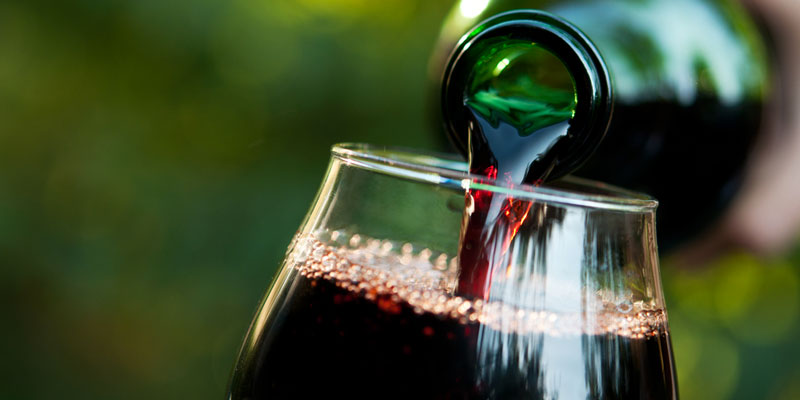You’ve come across fortified wines before. They have names like sherry, Port and vermouth, and they’re supposed to be sipped by candlelight while you discuss 18th-century literature. But there’s another class of fortified wines you may not know about called vin doux naturels. These are the oldest fortified wines of all, and although they’ve fallen out of the spotlight, you should do yourself a favor and hunt some down.
Vin doux naturel is a style that gives winemakers a lot of room to experiment. Sure, the variety of grape is central to any good wine, and we know how terroir lends perspective, while aging brings deeper layers of nuance. With VDNs, though, controlled exposure to air and sunlight affects the outcome even further. The resulting flavors cover a wide range, from honeyed stone fruit to herb-dried apricot and rich blueberry jam.
At the same time, there’s a deep-rooted history and tradition to these wines. To this day, they’re only produced in a small stretch of protected areas in France, and under particular regulations — as is the case with Cognac and Armagnac. There’s also a key process in their production that sets them apart — a little thing called mutage.
Mutage: Adding Booze to Booze for Better Booze
Mutage is the thing that makes these fortified wines fortified, and it’s been utilized for over 700 years. We can thank a scholar and doctor by the name of Arnau de Vilanova, who discovered the technique way back in 1285. Once again, we find that scientists, academics and medical professionals are star players in the creation of delicious beverages.
So how does it work? Before fermentation is complete, a high-proof, neutral grape spirit is added to the mix. This brings the feasting yeasts to a grinding halt, thereby preserving some of the natural sugars of the grapes, which would otherwise be devoured and turned into alcohol. Those remaining sugars carry along a plethora of sweet flavors, while the neutral spirit pumps up the ABV to 15 percent or higher.
From there, the process varies quite a bit. Some vin doux naturels go straight to oak vats, where they’re aged anywhere from two and a half to 30 months. Others are first placed outdoors in glass vessels called demijohns, where they’re exposed to air and sunlight for a year, then moved inside to finish in barrels. The different approaches result in flavors that lean toward lush and fruity, or earthy and nutty.
The aging process also affects the stability of the wine. Fruitier, non-oxidized VDNs react more quickly once opened, so they should be refrigerated and consumed within a few days. Earthier, oxidized versions are like a good vermouth: If stored properly, they can last for months and maintain their characteristics.
 The Rules, Regions and Styles of Vin Doux Naturels
The Rules, Regions and Styles of Vin Doux Naturels
There are other fortified wines created using mutage, like Port. But unlike this tawny Portuguese step-cousin, VDNs hail from the Roussillon region of France. In a little stretch of the Mediterranean coastline, formerly part of Catalonia, you’ll find the only vineyards that grow and produce this collection of wines.
The region is broken down further into specific, protected winemaking areas, each known for its own style. While that does include geographic boundaries, appellations also carry their own rules and regulations for production. It’s the same type of formalized structure that makes Champagne distinctly different from Prosecco, and Scotch different from bourbon or rye.
There are a few main classifications to know, so impress your friends with the quick references below. And while these wines may not be available at your corner wine shop (yet), you can feel prepared when dessert rolls around at your fancy birthday dinner (or sparkly third date).
Rivesaltes
In the largest VDN appellation, several grapes are grown and utilized in a variety of styles. These wines are typically exposed to lots of oxygen and aged for five years or longer. Look for: Terrassous Rivesaltes Ambré 6, 12, or 18 year.
Muscat de Rivesaltes
With a focus on two types of Muscat grapes, this is where to turn for a sweet white with a consistent point of view. There’s no oxidation here, so expect fresh, bright fruit tones. Look for: Domaine Singla Muscat de Rivesaltes.
Banyuls
While blending a range of grapes, all Banyuls contain at least 50 percent Grenache Noir. They can be aged in bottles, barrels, demijohns and other vessels, in several styles. Look for: Domaine de la Rectorie Banyuls Rimage, Cuvée Thérese.
Maury
Maury wines can be dark, light or somewhere in between, and aged with or without oxidation. However, the rules around each of those variations are very specific. Look for: Maury Rancio by Domaine de la Coume du Roy.


